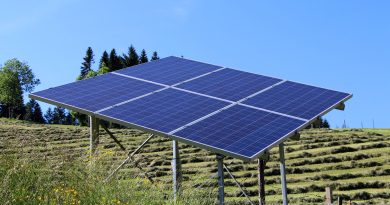is there a government grant for solar panels
India has been actively promoting renewable energy, particularly solar power, as part of its commitment to reducing carbon emissions and increasing energy security. To encourage the adoption of solar energy, both the central and state governments offer various grants, subsidies, and incentives. This guide provides an overview of the key government schemes, eligibility criteria, application processes, and the impact of these subsidies on solar panel adoption in India.
Table of Contents
- 1 The PM Surya Ghar Muft Bijli Yojana and Its Benefits
- 2 State-Level Solar Subsidies and Incentives
- 3 Eligibility Criteria for Government Grants
- 4 The Application Process for Solar Subsidies
- 5 Subsidy Amounts and Potential Savings
- 6 Table: Overview of Solar Subsidies in India
- 7 The Impact of Subsidies on Solar Panel Adoption
- 8 Challenges and Limitations in Availing Subsidies
- 9 Future Trends in Solar Subsidies in India
- 10 Case Studies of Successful Solar Panel Installations with Subsidies
- 11 Tips for Maximizing Subsidy Benefits
- 12 FAQ Section
- 13 Conclusion
The PM Surya Ghar Muft Bijli Yojana and Its Benefits
Overview:
- What is it?: The Pradhan Mantri Surya Ghar Muft Bijli Yojana is a central government initiative aimed at promoting solar energy in residential sectors. The scheme provides financial assistance to homeowners for installing solar panels, reducing the cost of installation and making solar energy more accessible.
- Benefits:
- Free Electricity: Under this scheme, households can generate their own electricity, potentially eliminating electricity bills.
- Subsidies: The government provides a subsidy on the cost of installing solar panels, making the investment more affordable.
- Environmental Impact: The scheme supports the reduction of carbon footprints by promoting the use of clean energy.
State-Level Solar Subsidies and Incentives
State Initiatives:
- Different States, Different Benefits: Various states in India offer additional subsidies and incentives to promote solar energy, complementing the central government’s schemes. These incentives can vary significantly from state to state.
Examples:
- Maharashtra: Provides additional subsidies on top of the central government’s offerings, particularly for rural areas.
- Gujarat: Known for its aggressive promotion of solar power, Gujarat offers a high subsidy percentage and has simplified the application process.
- Rajasthan: Provides substantial subsidies due to its high solar potential, making solar installations more affordable for residents.
Eligibility Criteria for Government Grants
General Eligibility:
- Residential Sector: Most subsidies and grants are targeted at homeowners in the residential sector. The property must be owned, and the applicant should have a valid electricity connection.
- Connection Type: The subsidy is generally available for grid-connected solar panel systems.
- Installer Requirements: To qualify for subsidies, the solar installation must be carried out by a government-approved or empaneled vendor.
Specific Criteria:
- Income Levels: In some states, additional subsidies may be available for low-income households.
- Rural vs. Urban: Some states offer higher subsidies for rural installations to encourage solar adoption in less developed areas.
The Application Process for Solar Subsidies
Step-by-Step Process:
- Consultation with Vendor:
- Select an Empaneled Vendor: Choose a government-approved installer who will guide you through the process.
- Site Survey: The vendor conducts a site survey to assess the suitability of your property for solar installation.
- Apply for Subsidy:
- Documentation: Submit necessary documents such as property ownership proof, electricity bills, and identity proof.
- Application Form: Complete the subsidy application form, which is often facilitated by the vendor.
- Installation:
- System Installation: After approval, the vendor will install the solar panels and connect them to the grid.
- Claiming the Subsidy:
- Verification: Post-installation, the system is inspected and verified by a government official.
- Subsidy Disbursement: Upon successful verification, the subsidy amount is either disbursed directly to the vendor or credited to the homeowner’s bank account.
Subsidy Amounts and Potential Savings
Subsidy Details:
- Central Government Subsidy: Typically covers up to 40% of the cost for systems up to 3 kW and 20% for systems above 3 kW and up to 10 kW.
- State Subsidies: Vary widely but can cover an additional 10-20% of the cost, depending on the state’s policy.
Example Calculation:
- Total Cost: INR 1,00,000 for a 3 kW system.
- Central Subsidy (40%): INR 40,000.
- State Subsidy (10%): INR 10,000.
- Final Cost to Homeowner: INR 50,000.
- Savings on Electricity Bills: Estimated at INR 10,000 per year, leading to a payback period of approximately 5 years.
Table: Overview of Solar Subsidies in India
| Category | Central Subsidy | State Subsidy (Example) | Eligibility |
|---|---|---|---|
| Residential (up to 3 kW) | 40% of the total cost | 10-20% depending on the state | Homeowners, grid-connected systems, empaneled vendors |
| Residential (above 3 kW) | 20% of the total cost (up to 10 kW) | Additional 10-20% in some states | Same as above |
| Low-Income Households | Additional support in some states | Higher state subsidies in specific states | Income criteria may apply |
| Rural Areas | Same as above | Higher subsidies in certain states | Location-based eligibility |
The Impact of Subsidies on Solar Panel Adoption
Increased Affordability:
- Lower Costs: Subsidies significantly reduce the upfront cost of solar installations, making it accessible to a broader range of people.
- Return on Investment: Faster payback periods due to lower initial investment and ongoing savings on electricity bills.
Growth in Solar Installations:
- Rising Adoption: Government incentives have led to a substantial increase in residential solar installations, contributing to India’s overall renewable energy targets.
Challenges and Limitations in Availing Subsidies
Awareness and Accessibility:
- Lack of Information: Many potential beneficiaries are unaware of the available subsidies or find the application process too complex.
- Vendor Monopoly: The requirement to use empaneled vendors can limit choices and sometimes lead to higher installation costs.
Delays and Bureaucracy:
- Approval Delays: The approval and subsidy disbursement process can be slow, deterring potential applicants.
- Inconsistent Policies: Variations in subsidy policies across states and frequent changes can create confusion.
Future Trends in Solar Subsidies in India
Digital Transformation:
- Online Applications: Streamlining the subsidy application process through digital platforms to reduce delays and improve accessibility.
- Real-Time Monitoring: Integration of smart monitoring systems to ensure the efficient use of subsidized solar installations.
Expansion of Subsidy Programs:
- Increased Budget Allocations: As India pushes towards its renewable energy goals, we may see increased funding and expanded subsidy programs.
- Focus on Innovation: Future subsidies might prioritize innovative technologies like solar storage solutions and smart grid integrations.
Case Studies of Successful Solar Panel Installations with Subsidies
Case Study 1: Urban Residential Solar Installation in Maharashtra:
- Details: A 5 kW solar panel system installed on a residential property in Mumbai.
- Subsidies Received: 40% central subsidy, 15% state subsidy.
- Outcome: The homeowner reported a 70% reduction in electricity bills and a payback period of 4 years.
Case Study 2: Rural Solar Installation in Rajasthan:
- Details: A 3 kW system installed in a rural household.
- Subsidies Received: 40% central subsidy, 20% state subsidy due to rural incentives.
- Outcome: The system provided reliable electricity, reducing dependency on inconsistent grid power and paying for itself in 3.5 years.
Tips for Maximizing Subsidy Benefits
Choose the Right Vendor:
- Government-Approved Vendors: Ensure that your vendor is empaneled and has experience in handling subsidy applications.
Plan the System Size Carefully:
- Optimal Sizing: Choose a system size that maximizes your subsidy benefits while meeting your energy needs.
Stay Informed:
- Regular Updates: Keep yourself updated on the latest subsidy policies and state-level incentives to ensure you take full advantage of available benefits.
FAQ Section
- What is the central government subsidy for solar panels in India?
- The central government offers a subsidy of up to 40% for residential solar systems up to 3 kW and 20% for systems above 3 kW and up to 10 kW.
- Are there additional state-level subsidies for solar panels?
- Yes, many states offer additional subsidies, which can vary from 10% to 20% of the installation cost, depending on the state’s policy.
- Who is eligible to apply for solar subsidies in India?
- Homeowners with grid-connected solar systems installed by government-approved vendors are typically eligible. Specific criteria may apply depending on the state and subsidy program.
- How do I apply for a solar subsidy?
- The application process generally involves choosing an empaneled vendor, completing the necessary documentation, and following the installation and verification steps facilitated by the vendor.
- What challenges might I face when applying for a solar subsidy?
- Common challenges include a lack of awareness, complex application processes, potential delays in approval and disbursement, and vendor limitations.
Conclusion
Government grants and subsidies play a crucial role in making solar energy more affordable and accessible to the Indian population. By understanding the various schemes, eligibility criteria, and application processes, homeowners can significantly reduce the cost of installing solar panels and contribute to a greener future. As the government continues to promote renewable energy, the scope and benefits of these subsidies are expected to grow, offering even more opportunities for solar adoption across the country.




Very informative on solar grants!
Thank you so much for your thoughtful feedback!